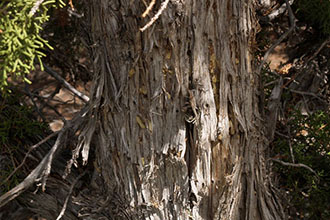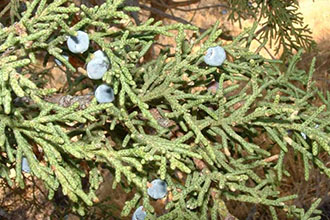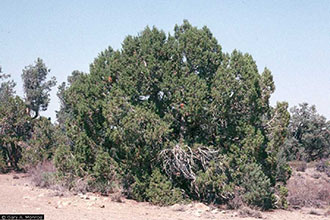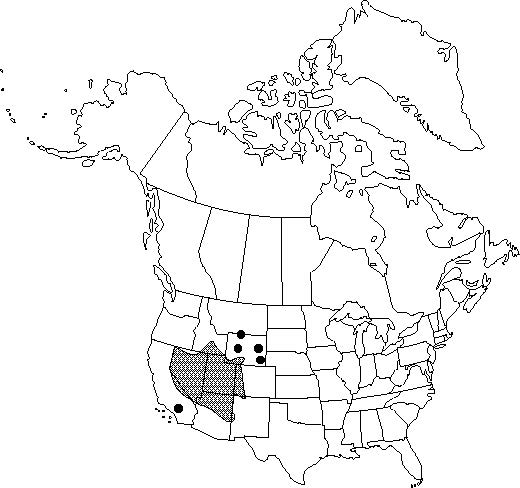USFS Plant Database
Utah juniper is a short tree that may live as long as 650 years. Utah junipers grow less than 8 m and are often as short as 3-4.5 m, with a trunk 10-30 cm thick.
Utah juniper is the most common tree in the Great Basin and is widely distributed throughout the arid West...Utah juniper is a climax species in a number of pinyon-juniper (Pinus-Juniperus spp.), sagebrush (Artemisia spp.)-grassland, and shrub-steppe habitat types...Utah juniper is not shade tolerant. It is a climax species in harsh areas where stands are open and regeneration can occur without competition for light.
Utah junipers have a taproot that extends deep into the soil (as far 4.5 m) and lateral roots that may extend as far as 30.3 m from the tree, several inches below the soil surface. Most root biomass is within the first 0.9 m of soil, with fine roots concentrated in the uppermost 46 cm or just below the soil surface.
Juniper litter has an allelopathic effect on some understory species, especially Idaho fescue (Festuca idahoensis), Sandberg bluegrass, and blue grama...Cheatgrass does not appear to suffer from allelopathic effects, and fourwing saltbush (Atriplex canescens) growth increases under juniper canopies.
The accepted scientific name for Utah juniper is Juniperus osteosperma (Torr.) Little (Cupressaceae).
In northwestern Nevada, Utah juniper hybridizes with western juniper (J. occidentalis). In Arizona, Utah juniper hybridizes with oneseed juniper (J. monosperma), Rocky Mountain juniper (J. scopulorum), and alligator juniper (J. deppeana).
Utah juniper is a climax species in a number of pinyon-juniper (Pinus-Juniperus spp.), sagebrush (Artemisia spp.)-grassland, and shrub-steppe habitat types. At the Idaho National Engineering Laboratory Site, Utah juniper dominates with big sagebrush (A. tridentata), antelope bitterbrush (Purshia tridentata), and threetip sagebrush (A. arbuscula), on areas with bluebunch wheatgrass (Pseudoroegneria spicata), needle-and-thread grass (Hesperostipa comata), Thurber's needlegrass (Achnatherum thurberiana), and Sandberg bluegrass (P. secunda).
In Utah pinyon-juniper sites, Utah juniper dominates with singleleaf pinyon (Pinus monophylla), Saskatoon serviceberry (Amelanchier alnifolia), threetip sagebrush, black sagebrush (Artemisia nova), big sagebrush, desert ceanothus (Ceanothus greggii), curlleaf mountain-mahogany (Cercocarpus ledifolius), true mountain-mahogany (C. montanus), green rabbitbrush (Chrysothamnus viscidiflorus), Stansbury cliffrose (Purshia mexicana var. stansburiana), antelope bitterbrush, desert snowberry (Symphoricarpos longiflorus), blue grama (Bouteloua gracilis), cheatgrass (Bromus tectorum), bottlebrush squirreltail (Elymus elymoides), sheep fescue (Festuca ovina), galleta (Hilaria jamesii), prairie junegrass (Koeleria macrantha), Indian ricegrass (Achnatherum hymenoides), western wheatgrass (Pascopyrum smithii), Sandberg bluegrass, bluebunch wheatgrass, and needle-and-thread grass. (Plant Database)



